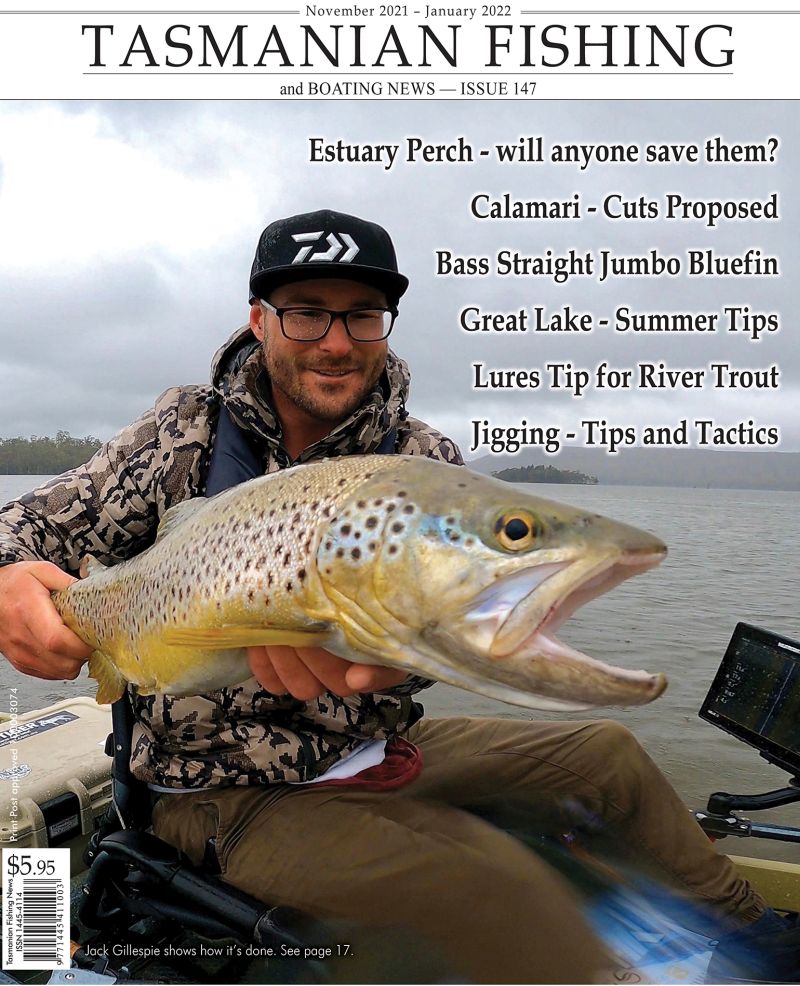From the Archives ...
Sea Trout Fishing - October and November
Sea Trout Fishing - October and November
Christopher Bassano
Fishing guide Christopher Bassano explores his favourite fishing-and shares a few tips that will help you discover the world of trout near the sea.
Please check all relevant authorities before fishing - www.ifs.tas.gov.au and dpipwe.tas.gov.au . Don't forget issuu.com/stevenspublishing for years of back issues !
Big wets work
Gavin Wicks
There is no better sight in fly-fishing than seeing your dry fly taken off the surface. Seeing a fish rise up from the depths, then its mouth close over the fly is truly magical. But we don’t live in a perfect world. Sometimes other methods have to be used to fool our target species. When conditions are bleak and cold, early or late in the season, then sometimes we have to resort to blind fishing big wet flies. Some fisherman like to refer to it as blind flogging, but I don’t think that gives enough credit to it, so we will stick to blind fishing.
- Written by Stephen Smith - Rubicon Web and Technology Training
- Category: Trout Fishing
- Hits: 4721
Up top early – Highlands rewards the hardy – Christopher Bassano
Yes it is cold—some even think miserable, but wow, the fishing can be fantastic. After three months of winter and very little fishing, the beginning of August is the traditional start of the fishing season. Many people leave it until the central highlands warm up before venturing ‘up top’ but by waiting that long, you could be missing out.
- Written by Stephen Smith - Rubicon Web and Technology Training
- Category: Trout Fishing
- Hits: 3931
Read more: Up top early – Highlands rewards the hardy – Christopher Bassano
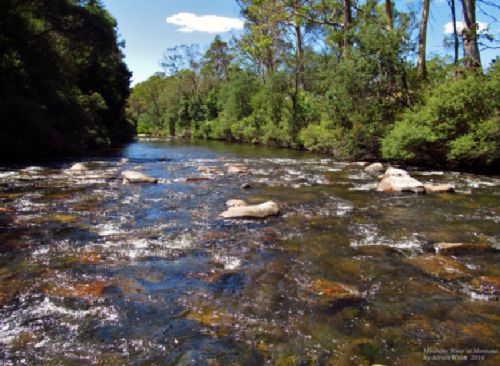 Very poor three hours on the Meander River 15/1/2016
Very poor three hours on the Meander River 15/1/2016
Still feeling pretty stiff and sore from yesterday's five hours in the Meander River I wasn't right to go fishing again until around 1.00pm today. Even then I was still feeling sore in the back and hips but popped down a couple of Panamax and headed of back to the Meander River at Montana. I thought I would try different stretch of river that I haven't fished for a couple of seasons. The main reason is because it's one of the toughest stretches of the Meander River to fish because the bottom is very rocky and quite often slippery too. Being a bright sunny day the good thing is that by the time I get there around 2.00pm it will have some shade along the western side of it.
- Written by Stephen Smith - Rubicon Web and Technology Training
- Category: Meander River
- Hits: 4201
Read more: Very poor three hours on the Meander River 2016 01 15
.jpg?1453358419) Can you believe this crap?
Can you believe this crap?
Mike, I hope you had a fun, restful break and got to enjoy some time with family and friends on our beautiful coast. From around Australia we've had reports of exciting fishing adventures, diving with turtles and surfing with dolphins. How lucky are we?!
Unfortunately – fishers and ocean lovers off the NSW Sapphire Coast are less lucky right now – because the Super TrawlerGeelong Star is vacuuming up marine life right in their backyard. Check out the photos below. Fancy fishing right next to the Super Trawler?
- Written by Stephen Smith - Rubicon Web and Technology Training
- Category: Super Trawler
- Hits: 4730
Drogue review by Michal Rybka
I was recently asked to conduct a comprehensive review of a drogue based on a design by Peter Hayes, but with further development and changes.
A drogue is simply a device that enables you to slow down the drift speed of your boat.
For an excellent review and further information, read here
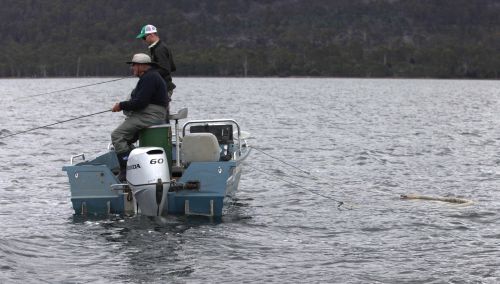
- Written by Stephen Smith - Rubicon Web and Technology Training
- Category: Tackle, Boats and other Equipment
- Hits: 9987
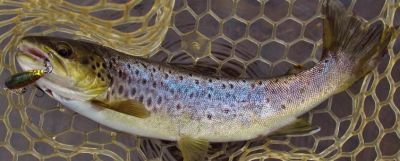 Gale force winds, but I still managed a few trout. 14/1/2016
Gale force winds, but I still managed a few trout. 14/1/2016
With the cool change finally here I headed off to fish the Meander River this morning at 5.30am. The forecast was for gale force winds but it wasn't too bad when I left Sheffield and headed off for the forty minute drive. I was in the river just before 7.00am in what was ideal conditions with it being overcast and a light South Westerly breeze. The first section of river I had just the two hooks up from small browns, they just didn't stay on the Rapala lure. I'm hoping this is not going to continue as the last trip here back on the 4th January when I lost the first four browns before I finally landed one. Well it only took me just on thirty five minutes before I had my first brown on this time and I only lost one other brown before I caught and released this 460gm trout. It's always good to get that first fish into the net that's for sure.
- Written by Stephen Smith - Rubicon Web and Technology Training
- Category: Meander River
- Hits: 4329
Read more: Gale force winds, but I still managed a few trout
Early Season Northern Rivers – Christopheri Bassano
From Issue 87
The anticipation surrounding the start of the fishing season seems to increase every year. We have had three months to decide where we will go on opening day, changed our minds ten times and finally decided that we will wait and see what the weather is doing. The highlands and the lure of big fish is ever present but this year it could be time for a change.
Often overlooked in the early part of the season, the rivers of Tasmania’s north and north east provide excellent fishing for fly, lure and bait anglers. The exact location of your chosen spot should be determined by your chosen technique and the height and colour of the water.
Macquarie River
For the fly fisherman, the Macquarie River has not fished as well over recent years as it has in the more distant past, but it looks better for this season. This difficult fishing is definitely due to low flows and warm summer weather. The best of the mayfly hatches will not start until October and dry fly opportunities will be limited. However, there is a silver lining! The high rainfall of recent weeks has swollen the river and backwaters have appeared down its course. These provide excellent fishing opportunities for all fishing styles. Fish have already been seen tailing throughout the lowland sections.
A burst dam further up the system a couple of years back had a negative impact on the river and the best fishing was further down the water course. Good Winter rains over the last couple of years should invigorate it again though. Although the height of the water around Woolmers Estate is usually determined by the amount of water being released from Brumbys Creek, backwaters will still fill if enough rain falls around the source. Water quality in spring will not be as good as that coming from Great Lake but this will not deter the fish. Finding the best backwaters can often mean driving up and down a river looking for just the right spot. On the Macquarie that can mean from well above Ross to Longford.
Small wet flies worked in eddies on long leaders over newly flooded ground can be productive. For the spin fisherman, shallow running lures and soft plastics will have the same effect. Although fish numbers may not be as high as those in other rivers, the quality of the fish can often make up for the reduced opportunities. Most fishing will be ‘blind’ but when light levels are low, trout can be found swirling in shallow water up adjoining ditches and channels.
For those who prefer to use bait to chase their fish, an unweighted worm and light spinning gear is all you need at this time of year on all rivers – including the Macquarie. Expect the river to be running a little discoloured which will hide you from the fish but do likewise for them.
Lake River
Running into the Macquarie is the Lake River. This river always runs with a ‘milky’ hue but expect it to be more muddy than milky if heavy rains persist. For those who have not fished the Lake River, it holds larger fish than you might at first think. Access is not always easy but if you are willing to walk from the obvious public access points, back eddies and side gutters are not hard to locate. The best techniques to use are similar to those outlined for the Macquarie.
Junctions of inflowing side creeks can provide a colour change and although not quite as productive for trout as they are for barramundi in the north, fishing these areas can be productive on an otherwise fishless day.
The same can be said for those areas where major rivers meet. Remember that trout do not have eye lids and when all else is equal, they will choose to stay in clear water where they can hunt and see danger with relative ease.
Brumbys Creek
Brumbys Creek is another water which suffered badly from low levels during last season. It is regularly frequented on opening day by local anglers hoping to catch larger fish around the bottom weir. Trout often escape from the fish farm and present anglers with a better than average chance of a three pound plus fish.
Trying to predict what the water level will be is almost impossible and it can also change very quickly. Rising or high water levels will bring fish into the shallows and provide the best fishing conditions. Sight casting to fish foraging in gaps in the weed is a real possibility. This is especially so above the top and bottom weirs where the flow spreads out and structure provides a break from the current. As with all of the rivers, stay away from the main flow and concentrate on slower moving back waters and ditches. The base of the weirs is also a reliable fall back as the turbid water provides currents in which fish can hold.
If water levels are low and less than ideal, deeper undercut banks are worth prospecting. Since the ‘settling dam’ was built at the base of the Western Tiers, water quality has reduced alarmingly. Although you would be unlucky to see it, there is potential for a huge volume of dirty water to come thundering over the weirs. If this happens, go elsewhere!
South Esk
Near by, the South Esk is one of my favourite destinations for early season fishing. There are many backwaters in very accessible spots that hold catchable fish. The water around Longford is under fished and has been flooding over paddocks throughout July. Fat fish will abound. The Mill Dam area is well worth prospecting if there is not too much water.
A clear summer flood is prime time fishing in the South Esk due to the numerous depressions that join the main river channel. When water rises into these areas along the entire lower course of the river, fish will move in to feed on drowned worms, spiders and grubs that were too slow to evacuate. Although it is difficult to polaroid these fish in the dirty waters of August and September, they are still there and very opportunistic. It is worth staying back from the edge of such areas and observing. Many fishermen feel as though the “dilution factor” is against them when there is such a large volume of water. This would be true if it wasn’t for the fact that fish will always gravitate towards a spot with the most food, plenty of cover and with no need to fight the current. Instantly, this rules out 99.9% of what is in front of you and often reduces the dilution factor to a better average than during summer.
Headwaters
For the fly fisherman, the headwaters may provide the pick of the sport. If fishable backwaters are hard to find, water levels are too high or in fact too low for flood water fishing then the upper reaches are where you should go. It is very common to find dry fly fishing and certainly sight casting in the region around Mathina at this time. Look for clean water and start fishing. Even those fishing with unweighted worms will have success with long casts upstream. Slowly real in the slack line as it comes towards you while holding the rod to the side. If the line stops, quickly point the rod at the worm, wait a second and strike. If you wait too long, the fish will have the worm too far down its throat and you run the risk of damaging or killing a fish that you had no intention of keeping. If this does occur, cut the line and tie on another hook. Do not go looking for it!
Meander River
The Meander River has been touted as the premier back water fishery during early season rains. There are plenty of run off channels, creeks and even storm water drains that enter the river down it’s course. Since the Meander Dam went in, the days of huge floods around Deloraine are gone. I suspect that fishermen are the only ones who shed a tear. What the dam has done however is to maintain more consistent flows. The further from the dam we look, the more influence run off creeks will have on water quality and height. This tells us that unless we can find that wonderful slack water as the river spills into the paddocks, we should look a long way up river. Walking from the Westwood Bridge and searching in amongst the tussocks is reliable. Look for flat country surrounding the river bed. The further up river you venture, the rockier and steeper it becomes making it less attractive if you are wanting backwaters but they can be found in smaller numbers up to the dam itself.
Before Huntsman Lake was built, my brother used to fish that exact stretch of river on opening day, never tie on a wet fly and always catch his bag. The fish were not big but all ate dries. The river upstream of the dam still provides the same quality sport. If you are looking for a feed, this is not the spot for you. The fish are tiny and best left to those who are there for the sport, intending to catch and release.
North Esk and St Patricks Rivers
The North Esk and St Patricks are influenced by rain falling in a different region. If other rivers are flooded out, this area (along with the Forrester) could be far less affected unless it has fallen in the east. Even still, it provides very consistent early season fishing. With Forestry plantations in the head water regions of the North Esk and St Patricks, neither river clears as quickly as it used to after rain. As I write this, the water running under one of the bridges of the St Patricks near my home has remained high and dirty for weeks. Both rivers can be fished in a very similar manner. Again, backwaters behind willow trees and ditches will produce plenty of fish for the worm fisherman. These are a little harder to fish with the fly and those using this method should venture upstream looking for clear water. There is nowhere better than the headwaters which provide kilometres of polaroiding water. It is tight but a small nymph placed in the right spot will elicit an aggressive take. As the fish are generally very small in these rivers, sight casting in dirty water is not easy. The fish need to be in centimetres of water in order to make a disturbance and although it does happen, it is not consistent sport.
When the rivers are running just inside the banks (a ‘banker’) fish will sit right along the edge waiting for the river to spill over. The target area for landing your offerings is small but as there is less water these fish could possibly sitting in, your chances of success are very good. This is where celta fishermen really clean up! Before my fly fishing days, I learned about trout and their behavioural patterns fishing these exact rivers with a red and gold celta at this time of year. It is a great way to recognise good trout habitat through success and failure.
All fish at this time of year are likely to be in less than ideal condition after spawning. They are generally a little bit ‘slimy’, out of condition and their flesh is less than perfect. Unless you really, really want a fish to eat, their table quality can not be recommended and I would advocate catch and release. This will see them there for you and everyone else during the summer months.
In a Nut Shell
Basic Facts about fishing northern rivers in August and September:
- If the water has spilt out into side ditches, paddocks and back waters, that is where the fish will be lying.
- Look for the cleanest water possible.
- If water appears unfishable, keep going upstream until you find cleaner water.
- Don’t fish fast water as most fish will have moved to slower side waters.
- Fish your flies and lures slowly as fish can be lethargic at this time.
- An unweighted worm is the best way to catch fish in flood conditions.
- Don’t simply go to the lakes!!!! The northern rivers can provide much better fishing and is a lot warmer!
Christopher Bassano
- Written by Stephen Smith - Rubicon Web and Technology Training
- Category: Esk and other Northern Rivers
- Hits: 5782
Tasmania PWS advise not to use Western Lakes tracks
On their Facebook page, Tasmania Parks and Wildlife Service have issued the following parks and track closure notice for 20 January 2016.
Source: http://www.ifs.tas.gov.au/news/tasmania-pws-advise-not-to-use-western-lakes-tracks
WALLS OF JERUSALEM NATIONAL PARK AND THE CENTRAL PLATEAU CONSERVATION AREA
Due to a bushfire in the Mersey Forest Road area, the Walls of Jerusalem National Park and part of the Central Plateau Conservation Area (Lake McKenzie) have been closed. The following tracks are closed until further notice:
Devills Gullett Walking Track, South Mole Creek (Yeates track), Parsons Track, Higgs Track, Western Creek Track, Little Fisher Track, Walls of Jerusalem main track, Lake Myrtle track, Moses Creek Track, Lees Paddocks Track, Explorer Creek Route and Blue Peaks Route.
Fisherman are also advised to avoid using Pillans Lake Track to access Lake Field, Julians and Pillans Lake within the Central Plateau Conservation Area.
Liffey Falls: the road into Liffey Falls and the campground are closed.
The highlighted section above is of particular interest to anglers. This area can be popular for vehicular and walking access at this time of year. Check PWS website and Facebook page for updates.
- Written by Stephen Smith - Rubicon Web and Technology Training
- Category: IFS, DPIPWE, MAST and Peak Bodies
- Hits: 4179
Closure of boat ramps at Great Lake 20 January 2016
Source: http://www.hydro.com.au/about-us/news/2016-01/closure-boat-ramps-great-lake
Hydro Tasmania advises that only one formally recognised boat ramp remains open at Great Lake.
Prior to Christmas, Cramps Bay and Swan Bay boat ramps were closed, following advice from Marine and Safety Tasmania and the Inland Fisheries Service that they are not usable at current water levels. This month, Tods Corner, Haddens Bay and Brandum Bay boat ramps have been closed. The five ramps will remain closed until water levels increase.
- Written by Stephen Smith - Rubicon Web and Technology Training
- Category: IFS, DPIPWE, MAST and Peak Bodies
- Hits: 4167
Read more: Closure of boat ramps at Great Lake 20 January 2016
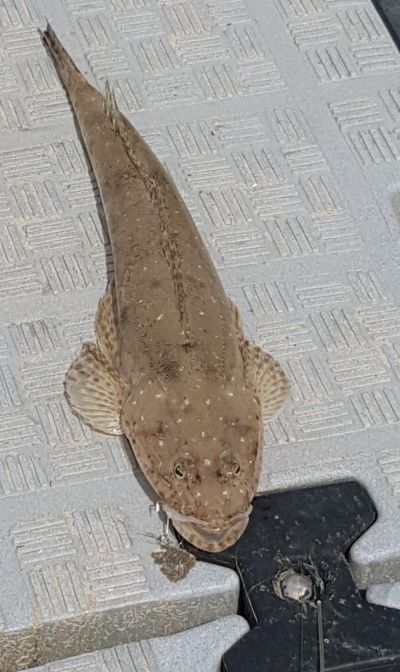 Wynyard Jetty Flathead
Wynyard Jetty Flathead
48cm long sand flathead caught off the end of pontoon at Wynyard yacht club boat ramp. 735 grams was it's weight.
Click "Read More" for a full sized picture
- Written by Stephen Smith - Rubicon Web and Technology Training
- Category: Saltwater and Estuary Fishing
- Hits: 10445
Subcategories
Current TFBN
Click above for current issue content. The current issue of TFBN is extensive and topical. In Tackle Stores, Newsagents and by subscription.
Delivered to your door for $48 for 2 years (8 issues). To subscribe, send Mike $48 via www.paypal.com.au . (Basic instructions are here) The email is at Contact Us. Your address will be included from PayPal.
Or phone Mike with your c/c handy on 0418129949
Please ensure your details are correct, for Mike to organise delivery.
TFBN Newsletter Sign up Form
Why not submit an article ?
When you have finished for the day, why not have a brag about the ones that didn't get away! Send Mike an article on your fishing (Click here for contact details), and we'll get it published here. Have fun fishing - tasfish.com
Category Descriptions
Here is a list of all of the Article Categories. The number in Brackets, eg (13) is the number of articles. Click on Derwent River and all articles relating to the Derwent will be displayed in the central area.
Articles by Category
-
Rivers (3)
-
Saltwater and Estuary Fishing (149)
-
Kayak Fishing (34)
-
Lakes (1)
-
Great Lake (62)
-
Lake Leake (52)
-
Woods Lake (16)
-
Lake Augusta (11)
-
Huntsman Lake (13)
-
Lake Pedder and Gordon (10)
-
Lake Dulverton (5)
-
Lake Crescent (6)
-
Tooms Lake (10)
-
Lake Mackintosh (2)
-
Lake Barrington (5)
-
Little Lake (8)
-
Meadowbank Lake (5)
-
Lake King William (7)
-
Lake St Clair (2)
-
Western Lakes (12)
-
Arthurs Lake (35)
-
Lake Echo (7)
-
Four Springs (54)
-
Lake Sorell (7)
-
Lake Burbury (6)
-
Other Lakes (57)
-
Brushy Lagoon (18)
-
Little Pine Lagoon (5)
-
Penstock Lagoon (16)
-
Brumbys Creek (7)
-
-
Events (48)
-
Estuary Fishing (0)
-
Coastal Catches (46)
-
Super Trawler (46)
-
IFS, DPIPWE, MAST and Peak Bodies (435)
-
Commercial Interests (98)
-
Other (24)
-
TFBN Back Issues (8)
-
Fly Fishing (67)
-
Trout Fishing (252)
-
Meteorology and Weather (8)
-
Jan’s Flies (50)
-
Tuna Fishing and other Game Fishing (86)
-
Cooking Fish (19)
-
Fishing Information (1)
-
Fishing Books (8)
-
Videos (5)
-
Tackle, Boats and other Equipment (146)
-
World Fly Fishing Championship 2019 (2)
Popular Tags
windyty.com
Visit https://www.windyty.com/
Rubicon Web and Technology Training
Hello everyone, I thought it would be a good time to introduce myself.
My name is Stephen Smith and I have been managing the website tasfish.com since May 2009.
It has been an epic journey of learning and discovery and I am indebted to Mike Stevens for his help, support and patience.
I am developing a new venture Rubicon Web and Technology Training ( www.rwtt.com.au ). The focus is two part, to develop websites for individuals and small business and to train people to effectively use technology in their everyday lives.
Please contact me via www.rwtt.com.au/contact-me/ for further information - Stephen Smith.
From the Archives ... (last chance)
Sea run trout tactics – Craig Vertigan
Sea run trout tactics – Craig Vertigan
During the trout off-season I tend to spend a bit of time chasing bream, to continue getting a fishing fix, and spend time tying flies and dreaming about the trout season to come. It’s a time to spend doing tackle maintenance, stocking up on lures and dreaming up new challenges and goals for the trout season ahead. When the new season comes around I usually spend the first few months targeting sea runners. Sea run trout are simply brown trout that spend much of there lives out to sea and come in to the estuaries for spawning and to feed on whitebait and the other small endemic fishes that spawn in late winter through spring. Mixed in with the silvery sea runners you can also expect to catch resident fish that have the typical dark colours of a normal brown trout as well as atlantic salmon in some of our estuaries that are located near salmon farm pens. Living in Hobart it is quick and easy to do a trip on the Huon or Derwent and is a more comfortable proposition compared to a trip up to the highlands with snow and freezing winds to contend with.
Read more ...
